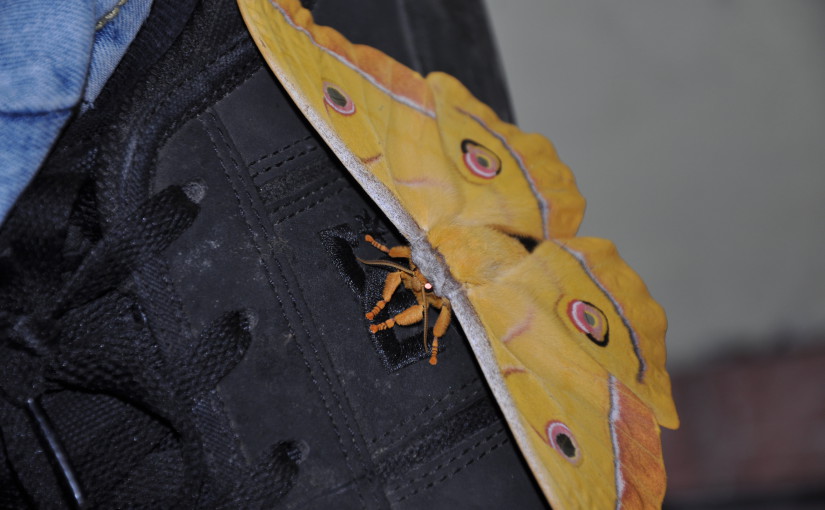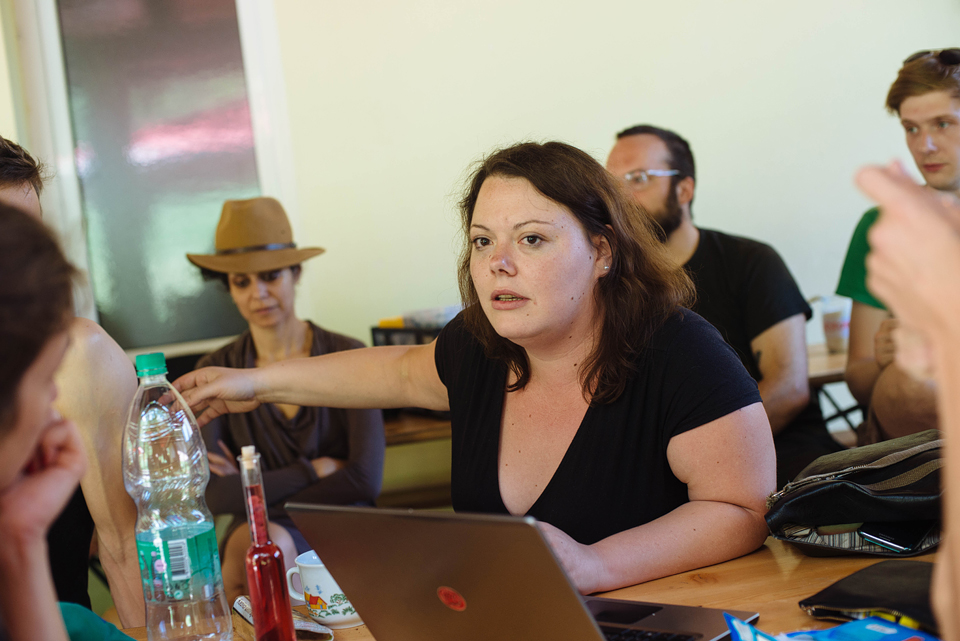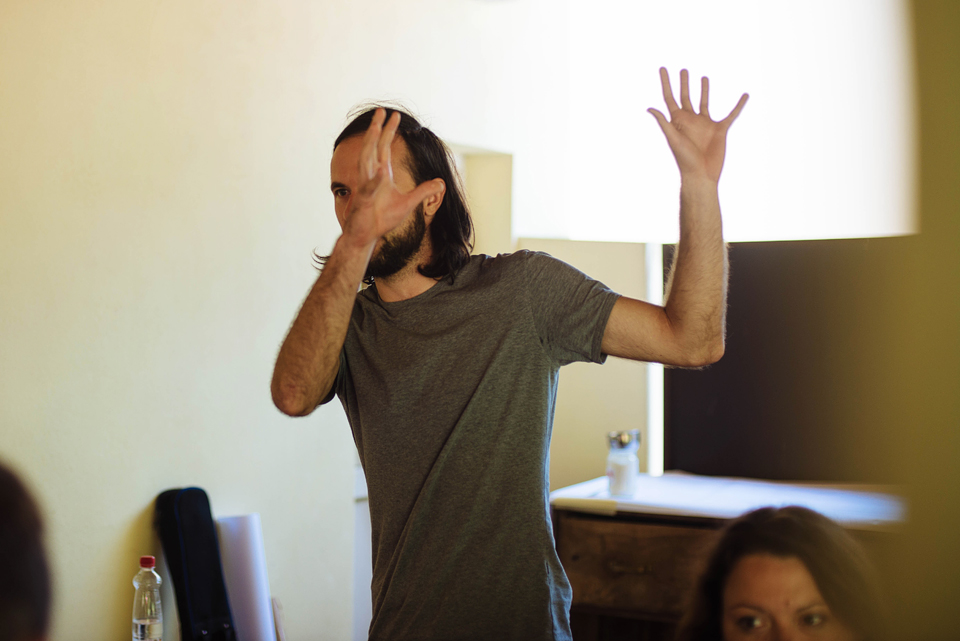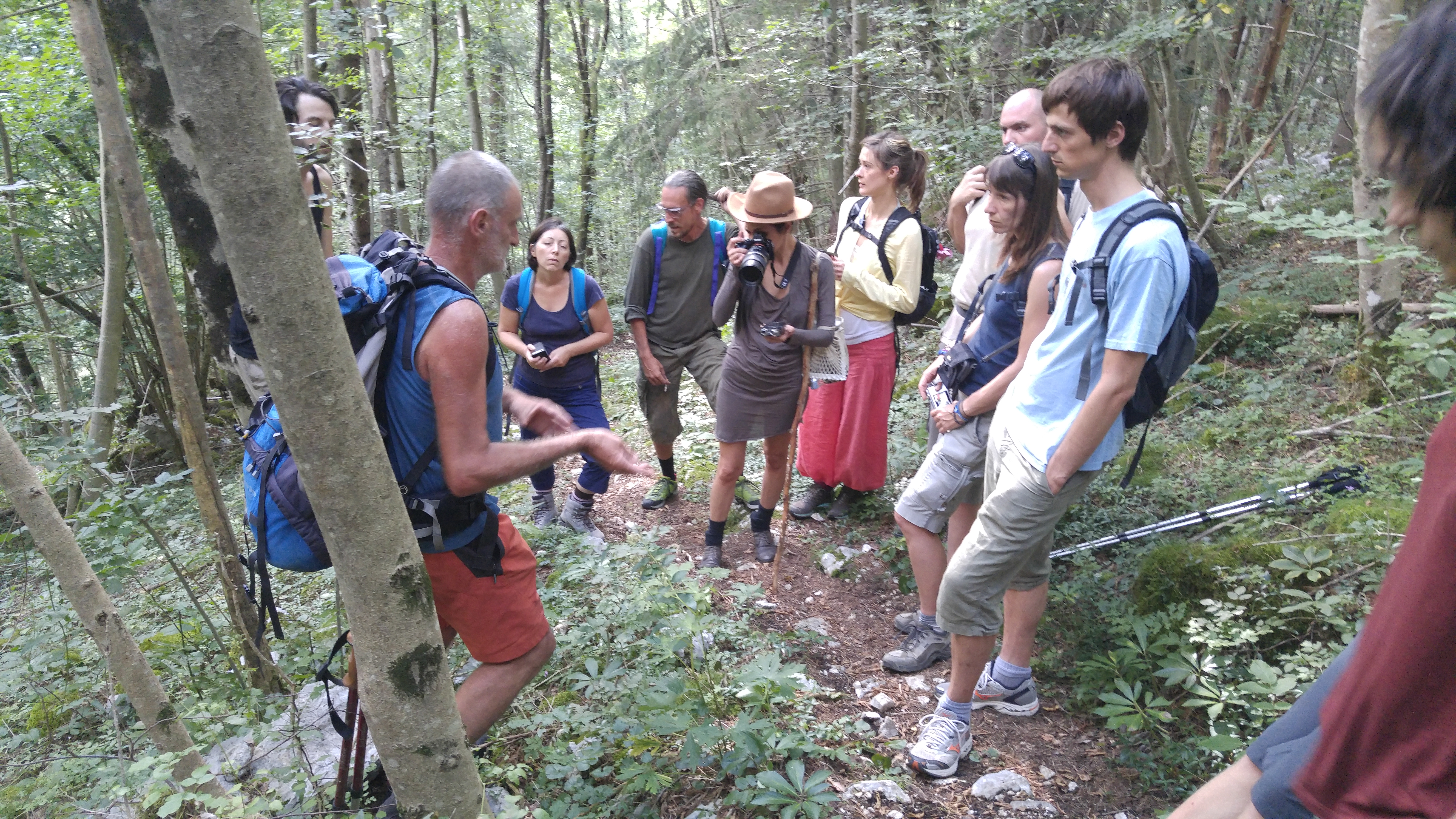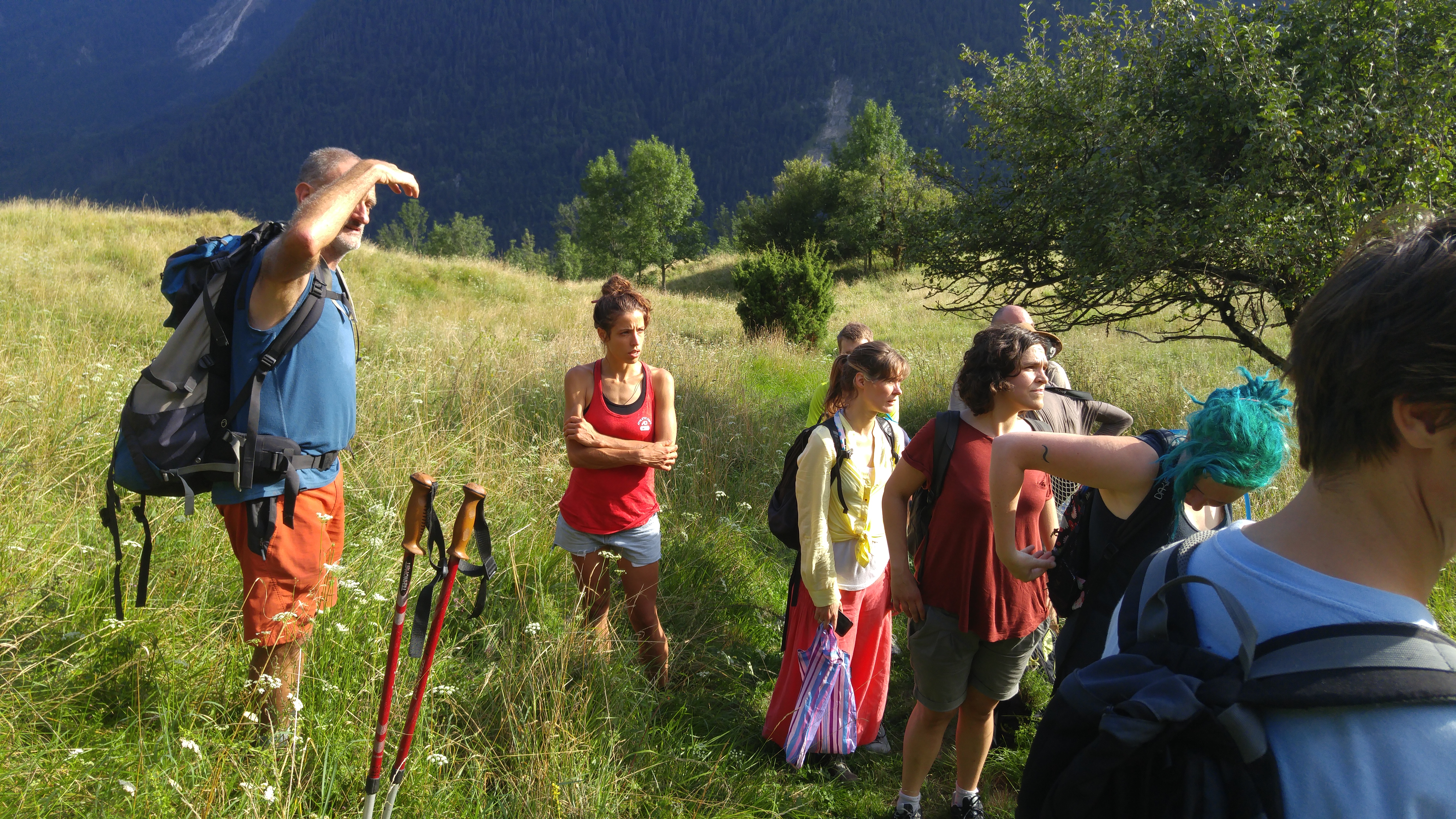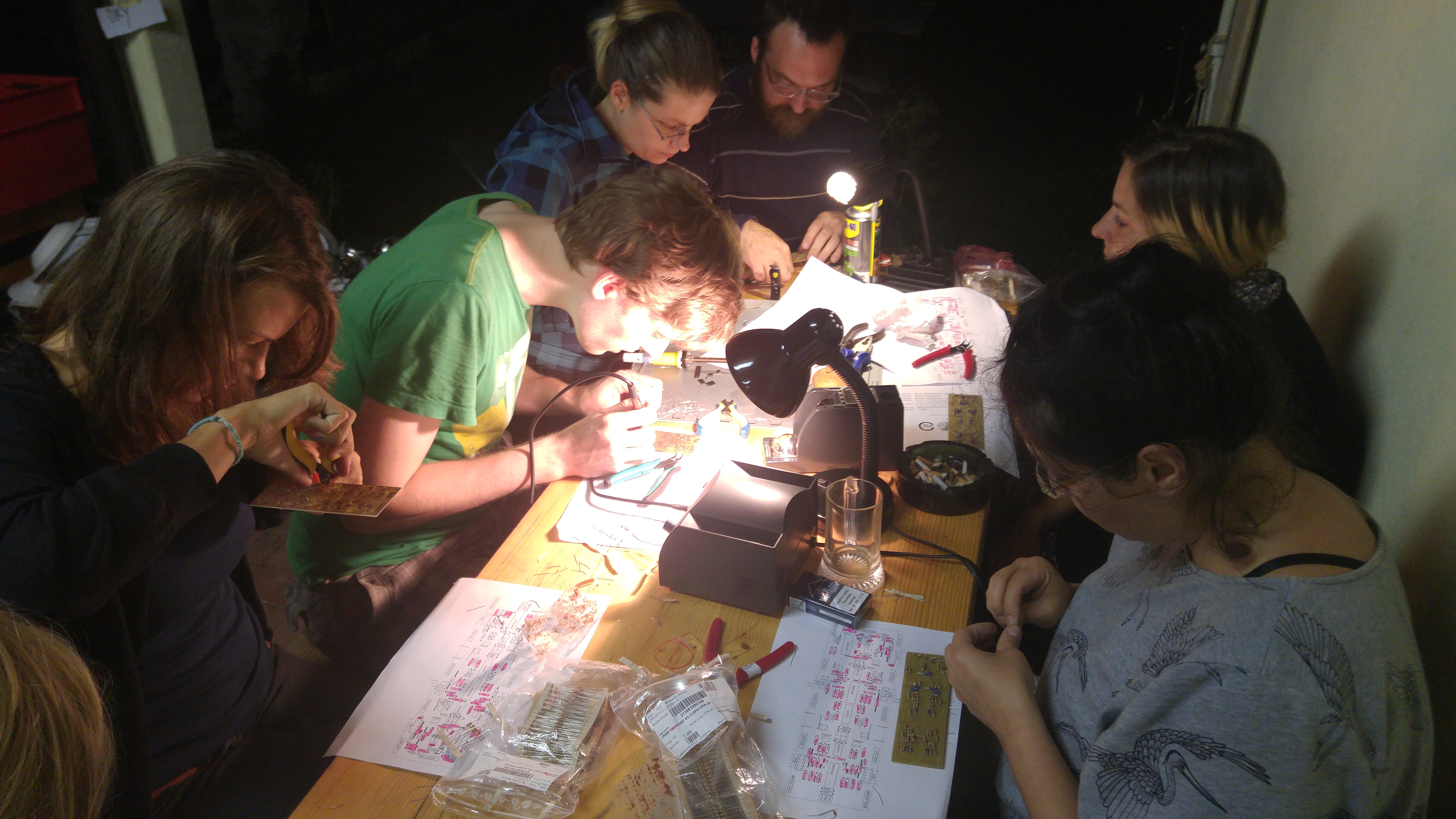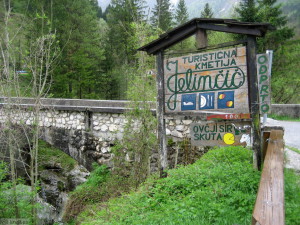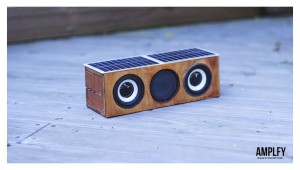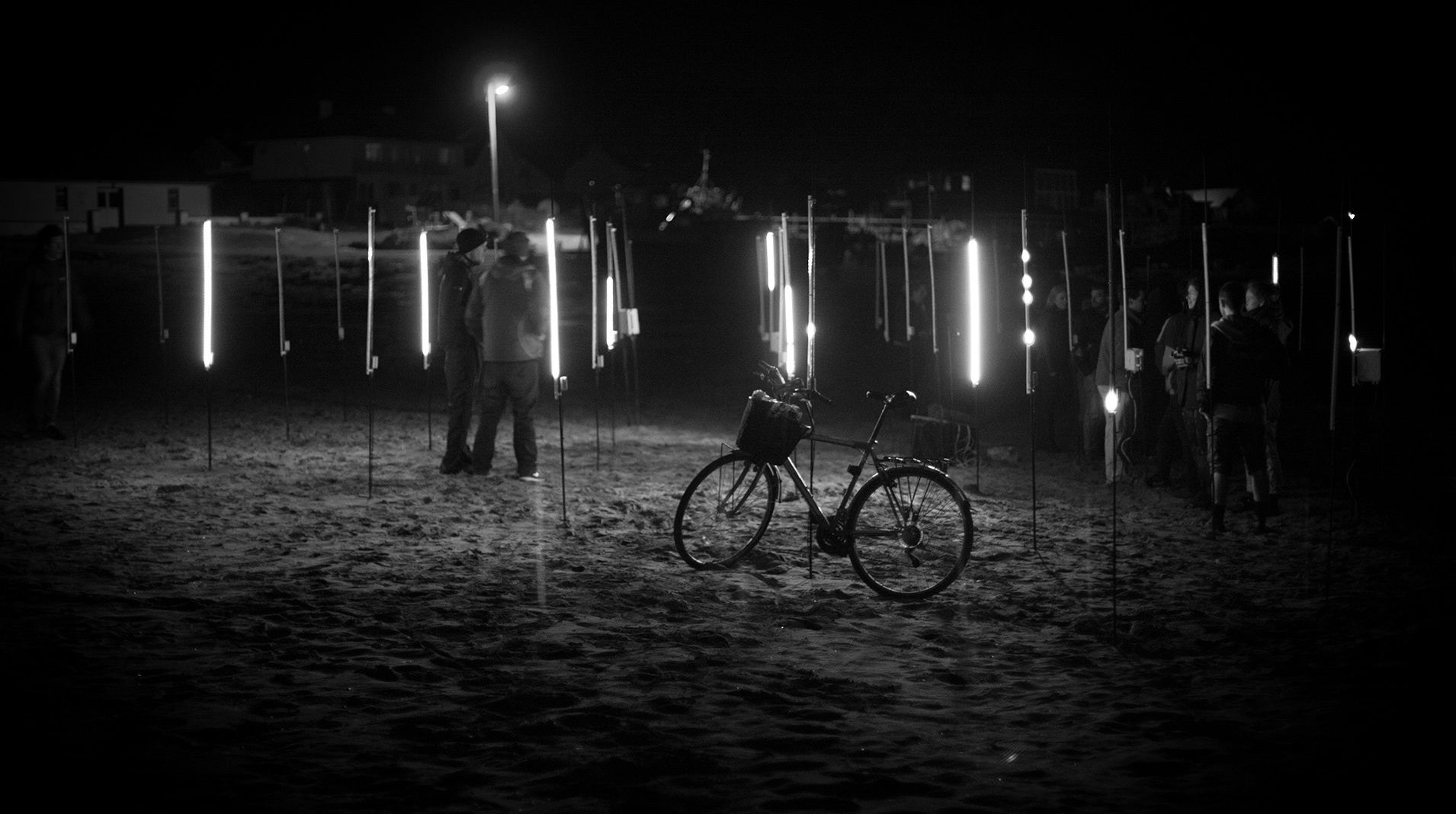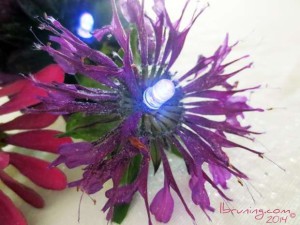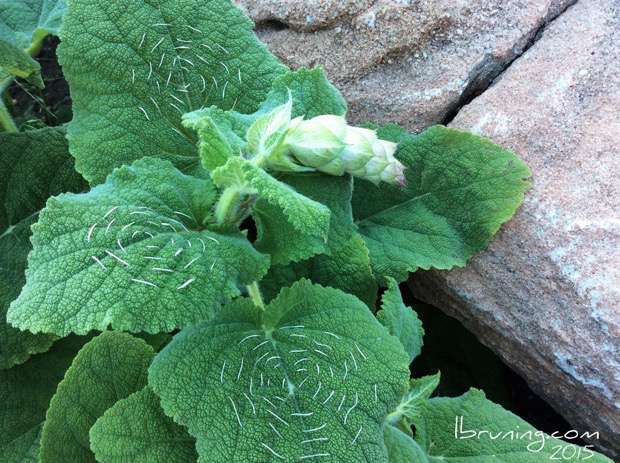Half an hour walk around the camp and collecting the sounds. You can also hear wasps when they fly close to microphone.
PIFcamp has begun!
Although we had already had a working weekend, Monday was an official opening of PIFcamp. After breakfast our guests presented their project and other participants introduced themselves. Some of us went for two shorter hikes guided by one of our guests Dario Cortese who is also running a food hacking node. After a busy day we finished out night eating worm dinner, playing board games and drinking beer. And some just kept on working.
Photos: Katja Goljat
PIFcamp is almost here! Information for visitors.
A weekend is all that separates us from the beginning of the first Slovenian international hacker camp, when on location in Trenta (Soča village, house number 25) more than 50 participants will join forces and work on 12 projects from the fields of DIY electronics, circuit-bending, bio-hacking, e-textiles, wearable technologies, computer art, light interventions, food hacking and all other “ordinary” hacks of life!
We invite all, who are interested in this sort of activities, but are unable to attend for the whole week of PIFvacations, to visit us on Open Saturday (AUG 8) and join us in the activities throughout the day and PIFproject presentations.
There will also be plenty of guaranteed opportunities to converse with the unique, sagacious, resourceful and playful individuals, who participate in the camp.
It should be noted that all PIFcamp visitors have a special 20% discount, if in the time of the PIFhappening they choose to set up their tents in the nearby Jelinc camp (tourist tax is not included in the discount). You are able to get this offer, if you bring proof of your visit to the PIFcamp, which you will receive on PIFcamp location.
Looking forward to seeing you!
Another project for DIY PIF audiophiles!
Let's plant a PIFcamp web-tree!
In his project Tomaž Strgar, a graduate of the Faculty of Electrical Engineering and Computer Sciences, as well as a post-graduate student on the Faculty of Arts (both in Ljubljana), who develops alternative principles of display and organization of on-line content, restores and designs smaller pieces of furniture and much more, questions the foundations of contemporary tendencies of web, technologies and society in general development.
»Web 3.Tree«
The theoretical part will predominantly include hacking of the concepts of our web future, all of which have been accumulated under the term »Web 3.0«. We shall discuss the production of web tools and technologies, the intelligence of machines and people, the meaning of semantic web and content organizing, and visions, such as the intelligent networks of intelligent machines. As needed, we will enlist the help of Descartes, Darwin, Turing, Huxley, Hegel and other spirits to the discussion. With the help of the visitors from the interested participants of other PIFcamp projects we shall gather ideas and material to develop our PIF web tree.
Practically speaking, we shall perform a radical cut into the foundations of modern web aesthetics. A web page will no longer be a scroll, but will always – just like a poster – be visible in it’s whole; the interactive elements will following a click open a new page with same characteristics. With the combined use of standard and non-standard tools we shall plant the PIF web tree, which will function something like this. You are warmly welcome to collaborate!
More light on PIFcamp!
Another project group be mentored by Michael Murray (IE), who is an arts technologist working in the technical areas of Theatre, Circus, Music and Video with a background in electronics and computer technology and a true passion for lighting, and Tom O’Dea (IE), a Dublin-based artist, whose work encompasses sculptural works and mixed media installation across sound, electronics and video and is currently a researcher at the Arts Technology Research Laboratory in Trinity College Dublin.
The project aims to explore the idea of comparative rupture within the natural environment through the use of structured geometric lighting and sculptural installations, driven by data from local or networked sources. The aim of the project is to explore and deconstruct the claims towards neutrality and objectivity inherent in the data structures of the ‘hyper-real’ systems of global computing and communication technology by drawing them back into the affective and asignifying register of the natural environment.
The project will make use of various LED lighting technologies to create a system by which we can explore with other PIFcamp collaborators the effectiveness of different aesthetic strategies for reconstituting data as an affective or subjective entity.
The project also aims through collaboration to generate discussion about how a particular technology can act reflexively on the artist to shape their practice, through the setting in the natural environment, PIFcamp forces the project to coexist with elements outside the control of the technology’s parameters.
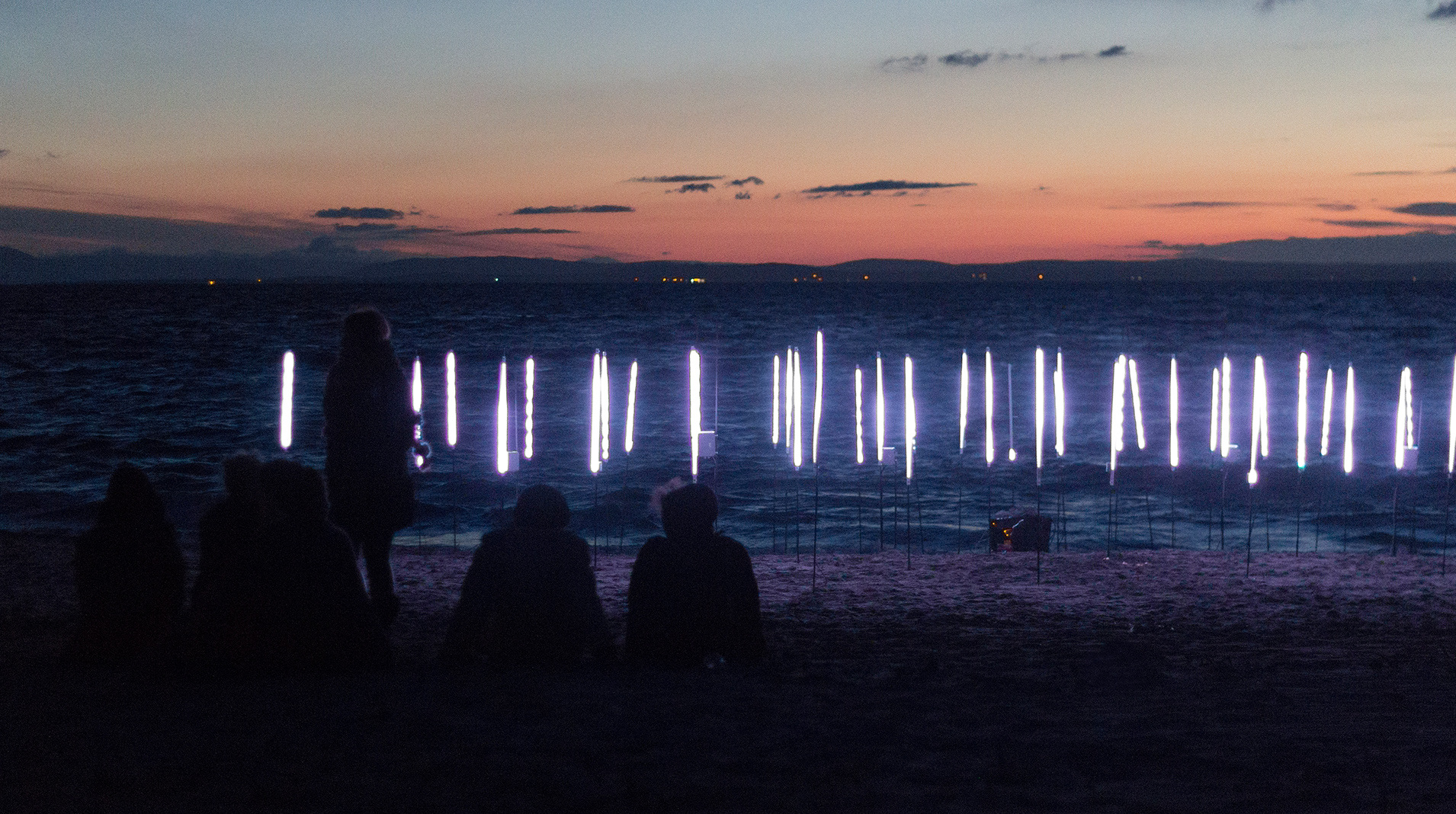
What is the sound of nettles cooking (or growing)?
Edible wild plants expert Dario Cortese presents his “food hacking” node!
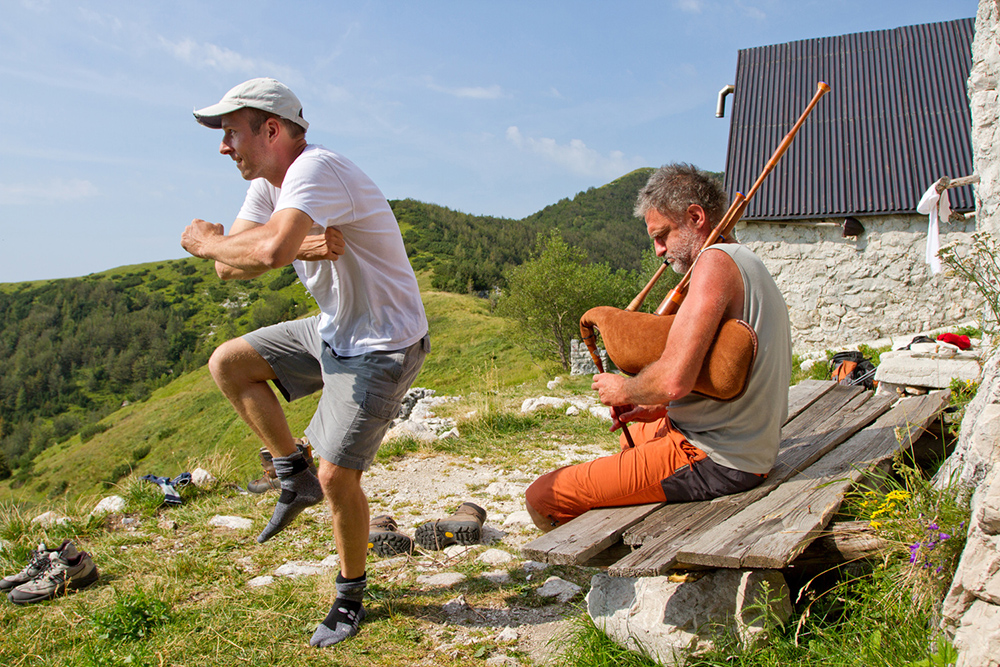
By the way, more than 2000 species (out of 3500+) of wild plants in Slovenia can be used as food.
Only on Open Saturday! Graphic Sound and Jam Session.
On Open Saturday the participants and guests of the camp will be able to join a workshop mentored by Lavoslava Benčič named Graphic Sound. Lavoslava works in the field of visual communication and is an active member of Čipke.
Graphic Sound
In the course of the three-hour-long workshop of graphic sound we will shape sonic structures. The workshop is mostly directed towards those, who don’t have previous knowledge or experience in music composition.
We will start by exploring the beginnings of Graphic Sound and continue by discovering some examples from the art scene of the 20th century. The digital era has wastly contributed towards the transformation of graphic sound tools. We shall get to know them in the practical part of our workshop. We will install the software on our personal computers, prepare our selected visual data for the inclusion into the program and for the effective transformation into sound. What follows are sonic experiments, conducted by the tranformation of visual data into sonic structures. The worshop will conclude with a jam session.
It is highly recommended that the participants bring their own laptops and headphones.
What about PIFcamp Reactive Network?
Computer art node holder and ultimate open source & free software geek Luka Frelih presents the 7th project of the summer camp, named PIFcamp Reactive Network.
PIFcamp Reactive Network will take on signals from the real world environment of the PIFcamp and its participants, react to them trough live-coded scripts and feed them back to the camp trough screens and kinetic sculptures. The physical input and output devices speaking the OSC protocol will connect trough Noise Make-up Language (NML), a web livecoding bridge, and form a living, pulsating and growing network inhabiting the camp site, its computers and browsers, not to mention the minds and bodies of campers.
We will invent and make input and output modules based on ideas from kinetic sculpture, DIY and kids robotics, modular synthesizers and the beautiful natural surroundings to combine humble potentiometers, servo motors and microcontrollers, glue and sticks into abstract expression carriers capable of transforming gestures into numbers and back again. We will also bring along and repurpose the huge 19-pad stomp board from Sounds of Ljubljana which will surely add to the fun of finding the pattern that will emerge from connecting these experiments with the noise emanating from other projects at PIFcamp.
The 6th PIFcamp project by our international guest Lynne Bruning
Lynne Bruning creates exclusive wearable art, eTextiles and adaptive technologies. She teaches seamless integration of electronics with textiles, inspiring fiber artists, electrical engineer and computer hackers to embrace eTextiles and wearable technology. Ms. Bruning fosters eTextile communities via The eTextile Lounge, an online resource and by lecturing and teaching worldwide.
eTextile Explorations
Using traditional crafting techniques of embroidery, lace making and sewing, we will use conductive fabrics, threads and paints to transform electronic hardware into soft circuits and eTextiles. During PIFcamp we will collaborate with the other nodes to replicate their computer circuitry into functional electronic textiles and thru this process gain a greater understanding of how electronic hardware is manufactured and how to manipulate these systems into eTextiles. By exploring alternative methods of manufacturing sensors and PCBs we hope to introduce additional tools to PIFcamp’s varied electronic systems and expand our electronic component vocabulary.
